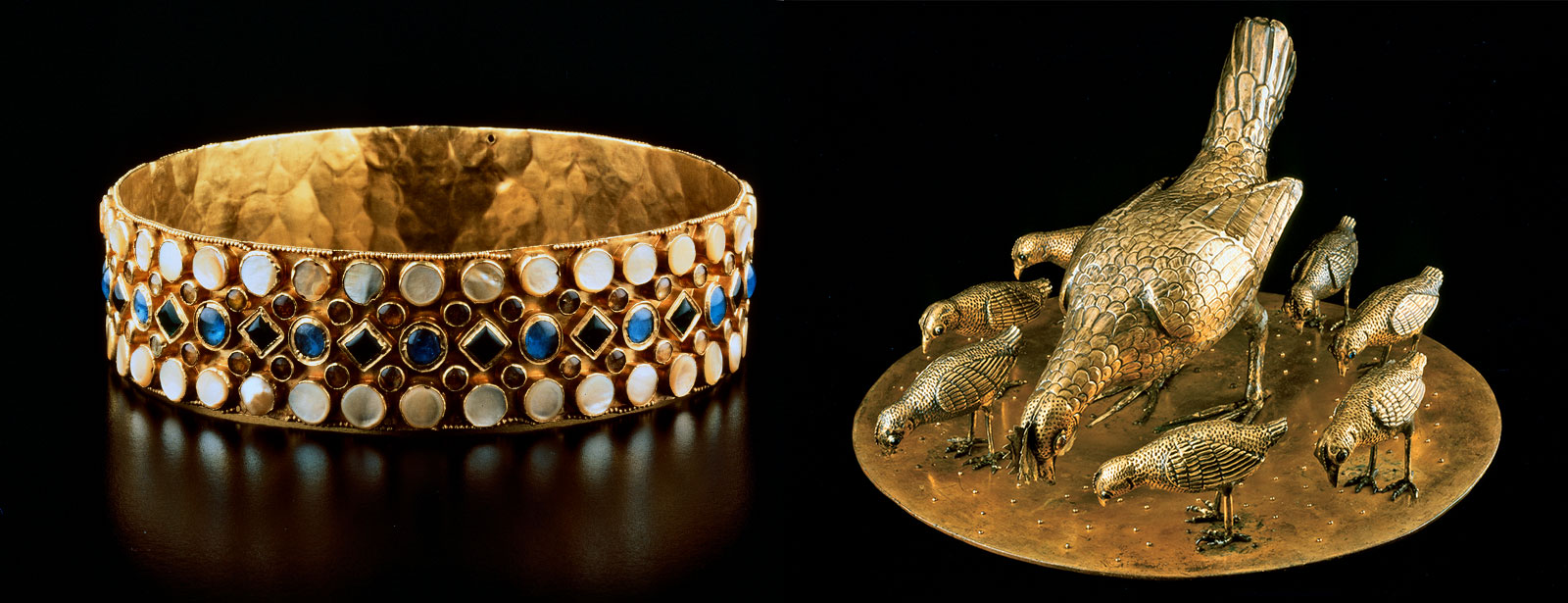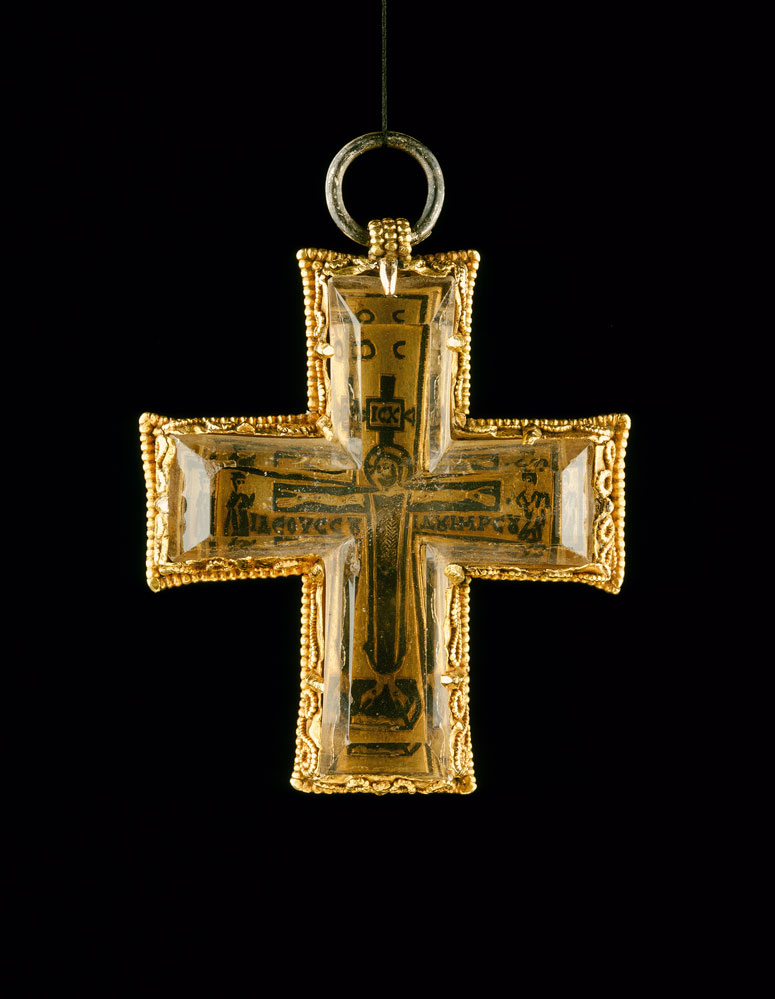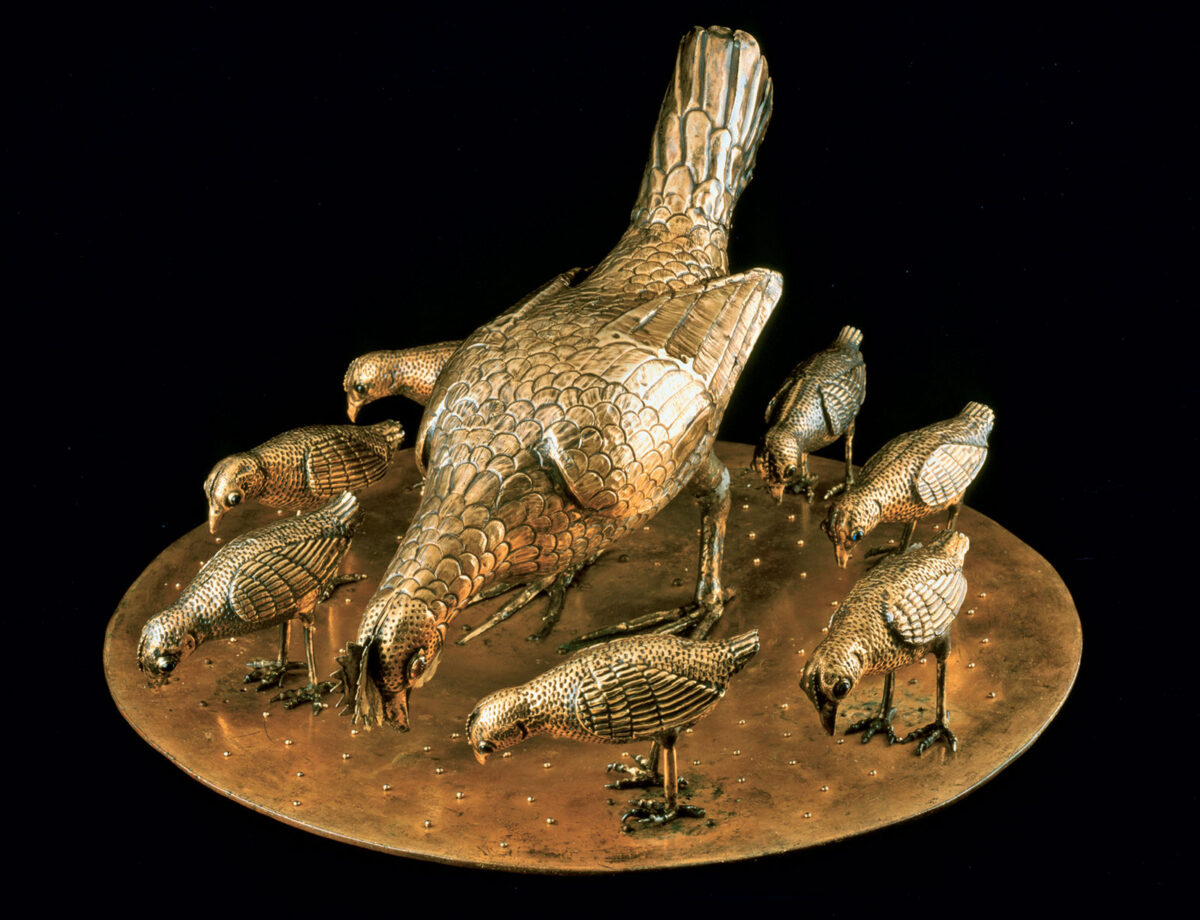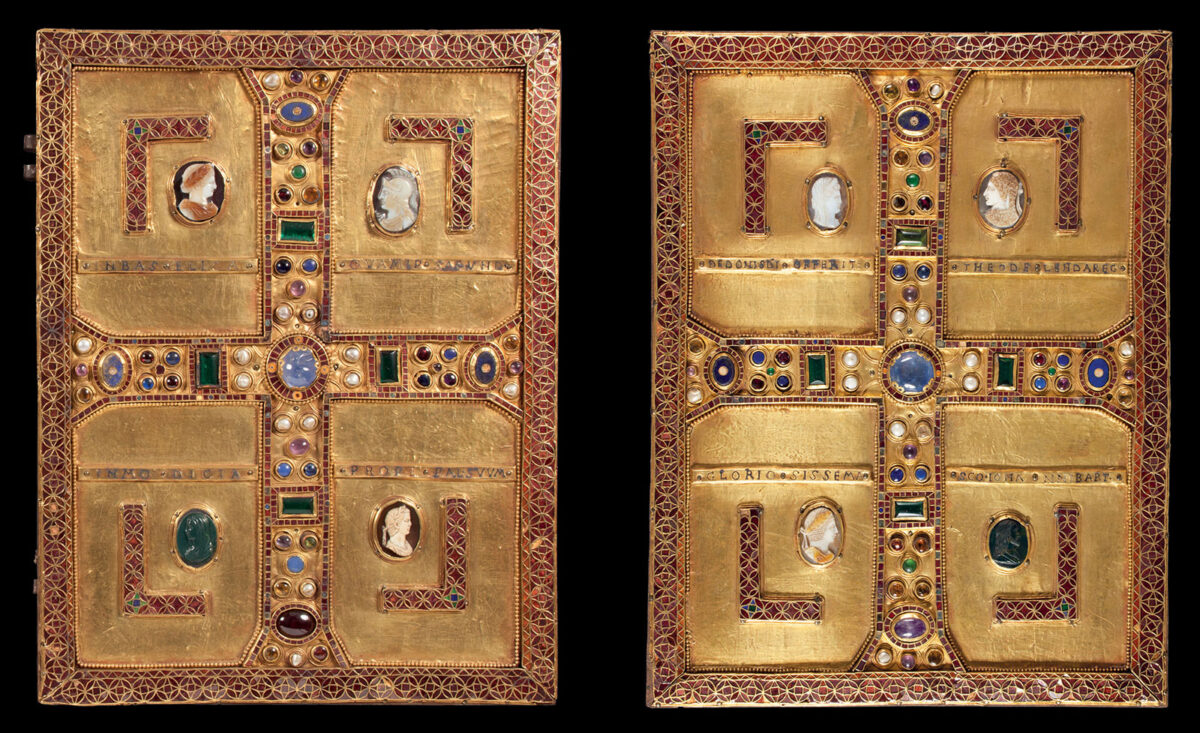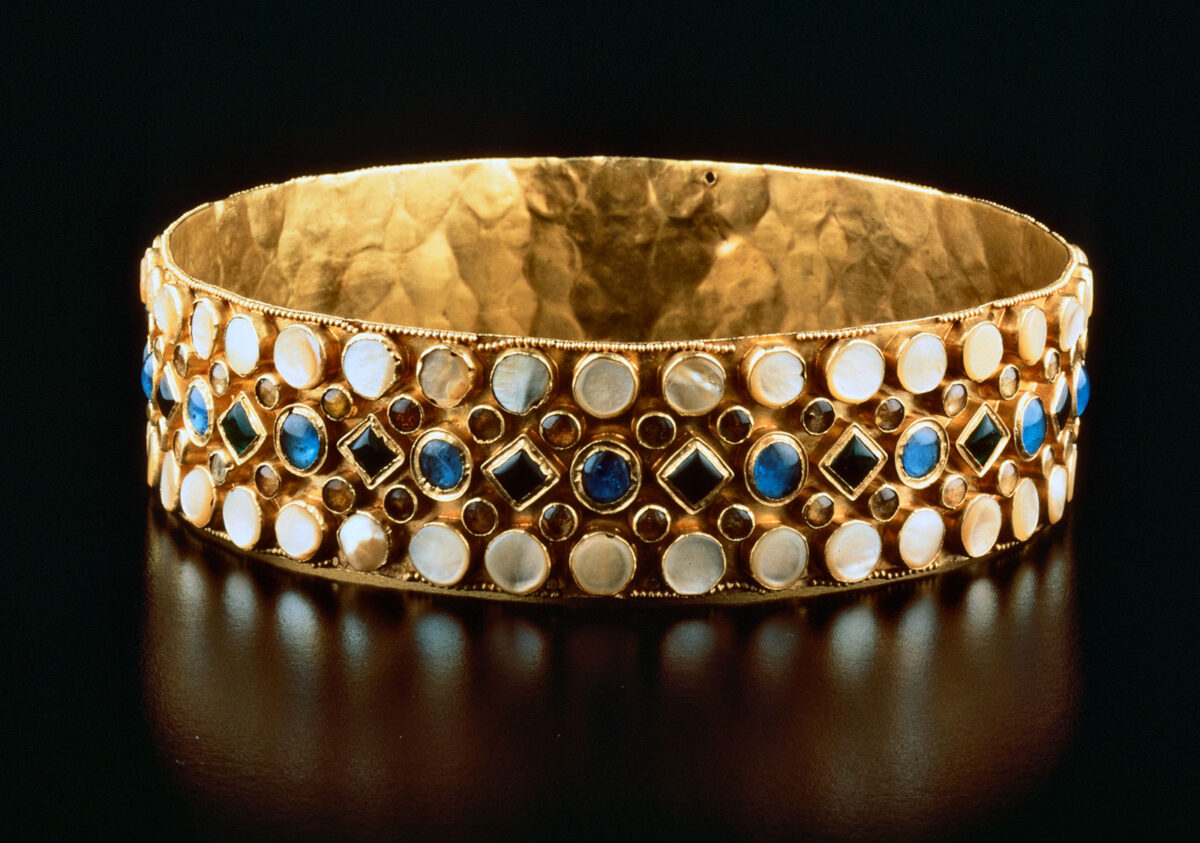As a center of Catholic worship, Theodolinda and Agilulf endowed the Basilica with a precious collection of relics and furnishings, some of which have survived to this day. These not only constitute one of the most important testimonies in the world of goldsmith works from a barbarian court of the late 6th and early 7th centuries, but also serve as a significant example of the various cultural influences that shaped artistic production in Italy during the transition from late antiquity to the Middle Ages.
The series begins with two very rare groups of reliquaries:
- The first consists of sixteen ampullae made of lead and tin alloy, forged in Palestine between the 6th and 7th centuries, containing samples of the oils used in the lamps lit in the sanctuaries of the Holy Land.
- The second consists of twenty-six glass ampullae containing drops of oil extracted around the year 600 from the lamps that burned on the tombs of the martyrs in the Roman catacombs.
Next is the Treasury room, where the surviving core of the liturgical furnishings donated to the basilica by the Lombard royal couple is located:
- The Cross of Adaloaldo, a reliquary of the True Cross, which, according to tradition, was sent by Pope Gregory the Great to Theodelinda in 603 on the occasion of the baptism of her son.
- The Binding of Theodolinda’s Gospel Book, adorned with two large jeweled crosses, frames in enameled filigree, reused Roman cameos, and an inscription recalling the foundation of the basilica.
- The Cross of Agilulf, covered on both sides with gems and pearls set in perfect symmetry.
- The Crown of Theodolinda, the only surviving example of the Lombard votive crowns that once existed in the Treasury.
- The group in gilded silver sheet of the Hen with seven chicks, discovered in the Middle Ages in the tomb of the Queen, and likely made in two phases, between the 4th and 7th centuries, by Milanese goldsmiths.
The so-called Sapphire Cup dates back to the Roman era. It is a blue glass cup, remounted in the 15th century on a gold stem, traditionally identified as the one Theodolinda would have used for her betrothal ceremony with Agilulf.
Of uncertain dating (7th or 9th century) are the gilded silver case for the fan and the comb mounted in silver and gems, both traditionally associated with the personal belongings of the Queen.
